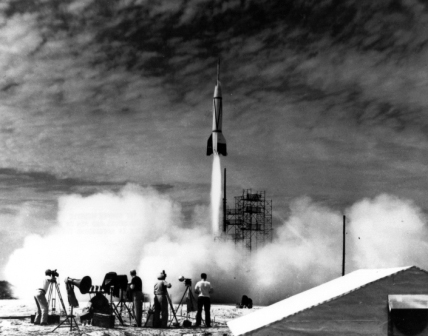FEATURED ROCKET
2024: Atlas ICBM
The mighty Atlas ICBM is legendary in the history of America’s space and missile programs. It began the Atlas family of rockets. The USAF developed it as America’s first ICBM (intercontinental ballistic missile) and one of the earliest liquid-fueled rockets in the 1950s! The Atlas quickly transformed into one of America’s most successful space launch vehicles. From 1957 into 2004, variants of the original Atlas launched hundreds of payloads into space, including our first astronauts into orbit! The legacy of Atlas continues today with ULA’s Atlas V series, which continues to launch from the Cape, setting more milestones along the way.
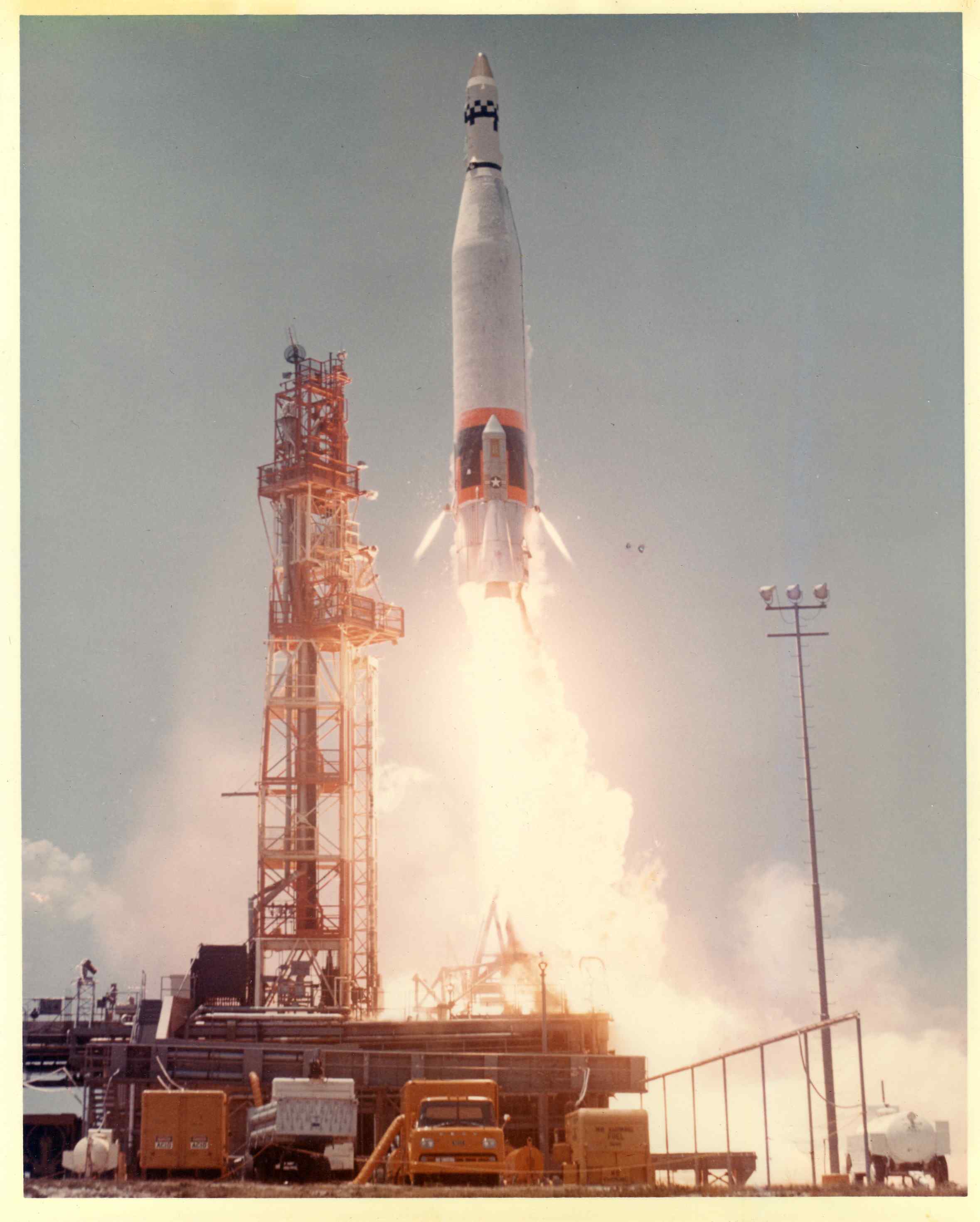
2023: XSM-64 NAVAHO
The XSM-64 Navaho missile was built as a proof-of-concept testbed for a proposed supersonic intercontinental cruise missile. The operational Navaho was intended to carry a nuclear warhead and have a combat range of about 8,000 kilometers (5,000 miles). The Navaho weapons system consisted of two parts, a liquid-fueled booster rocket and a ramjet powered cruise missile. The booster accelerated the cruise missile to nearly Mach 3. When the combination reached an altitude of 70,000 feet the booster separated and the ramjet engines were ignited, powering the missile the rest of the way to its target.
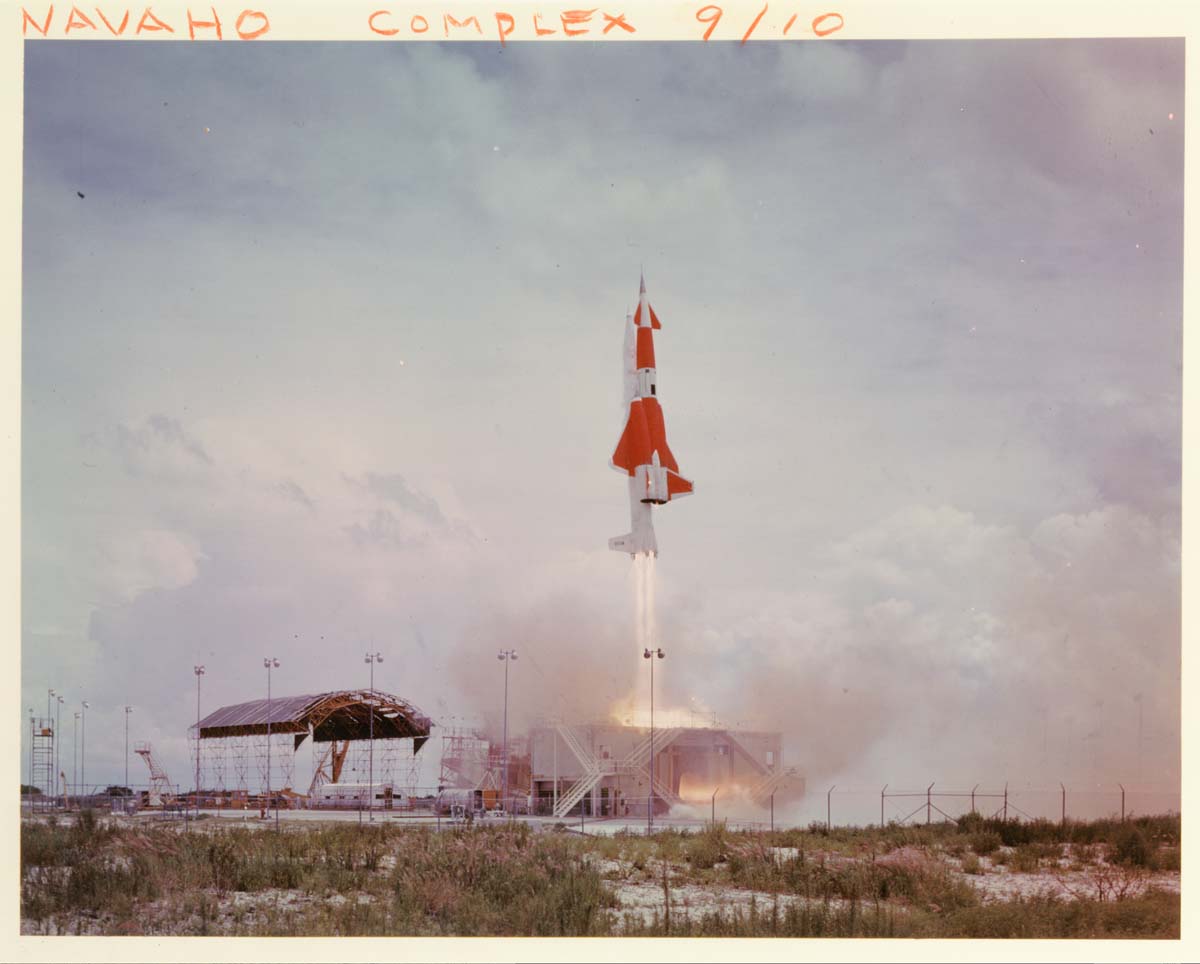
Development of the Navaho began in 1950 under the code name “Project Broomstick”. After numerous technical delays (giving rise to the nickname “Never-Go Navaho), the first test flight lifted off from Launch Complex 9 on 6 November 1956. A total of 11 Navaho test vehicles were launched from Cape Canaveral Space Force Station between 1956 and 1957. While steady progress was made with each flight, the rapid development of the Atlas and Titan ICBMs rendered the Navaho obsolete and led to the cancelation of the program July 1957 after only nine test flights. Two additional launches were authorized as part of Project RISE (Research Into Supersonic Environment), a research program designed to gather data on high speed supersonic flight.
Although the Navaho did not become an operational weapons system, it proved invaluable as a research and development program. The engines developed for its liquid fueled booster were the basis for those used on the Thor, Jupiter, Atlas, Titan and Saturn I rockets. The Navaho program also led to many of the advanced materials and fabrication techniques used in the aerospace industry today, including chemical milling, Heli-arc welding, titanium fabrication and bonded aluminum construction. Navaho pioneered avionics and navigation technologies used in numerous aircraft and missiles. The inertial guidance system, for example, employed one of the first solid-state digital computer ever developed in the United States, and was later used as the basis the guidance systems on Polaris and Trident ballistic missile submarines.
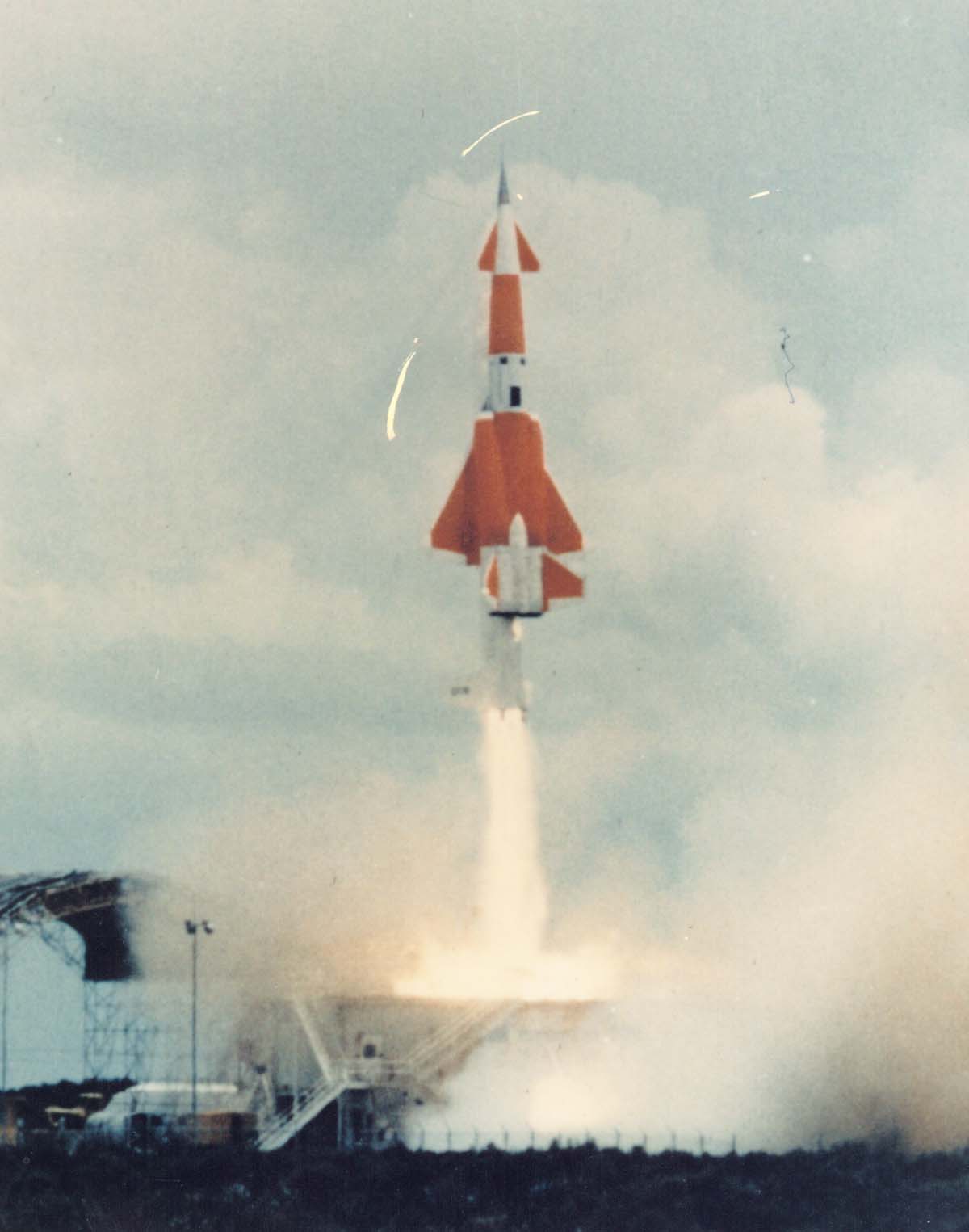
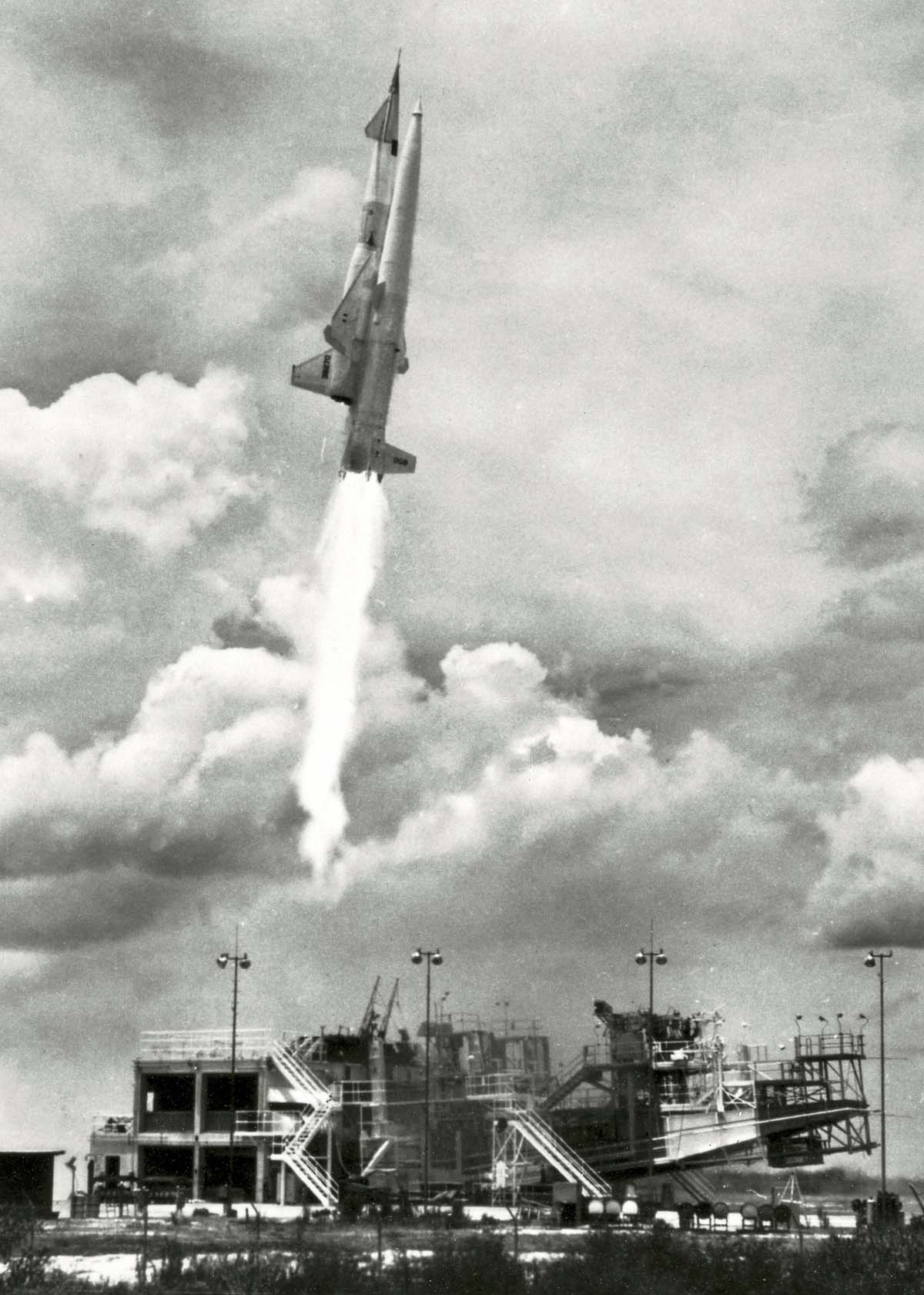
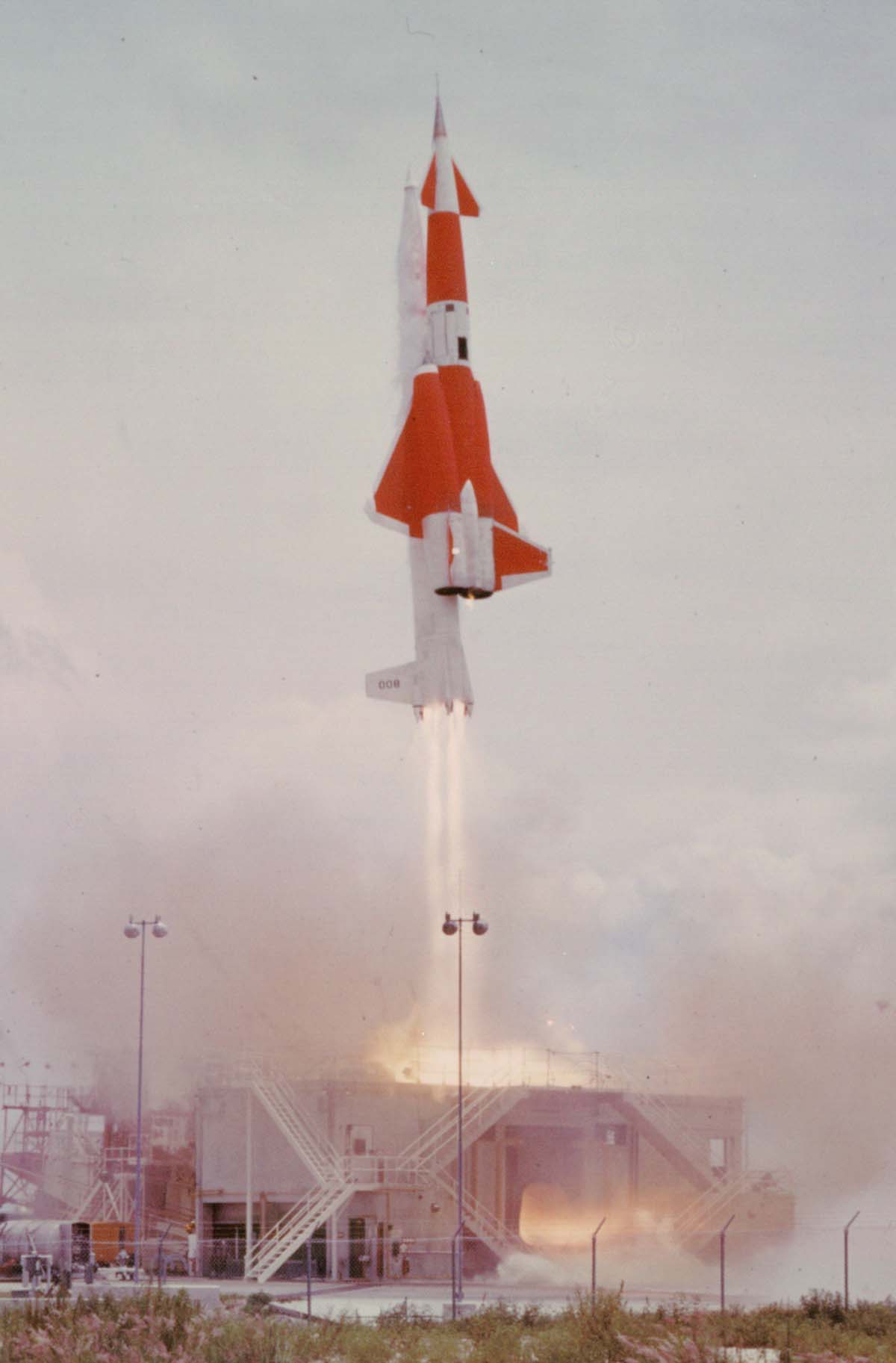
The XSM-64 located at the South Gate to Cape Canaveral Space Force Station is the only Navaho left in existence. Given the serial number 54-3099, it was the 10th airframe built and the last to be shipped to the Cape. It was scheduled to be flown as part of Project RISE, but with the program’s cancellation in December 1958, the missile was declared excess. It came to the Cape Canaveral Space Force Museum in 1964 and was originally displayed at Launch Complex 26. It was moved to its current location in 1999. Read more here.
FEATURED ROCKET BY YEAR:
